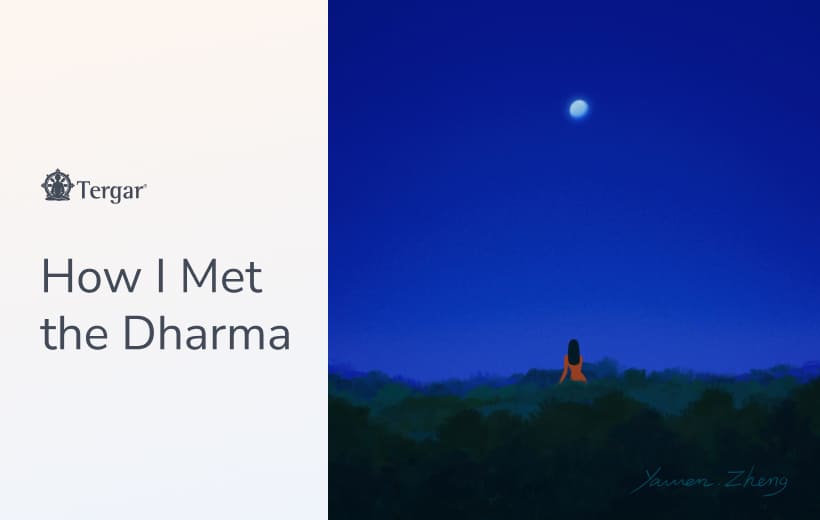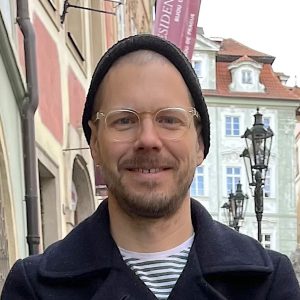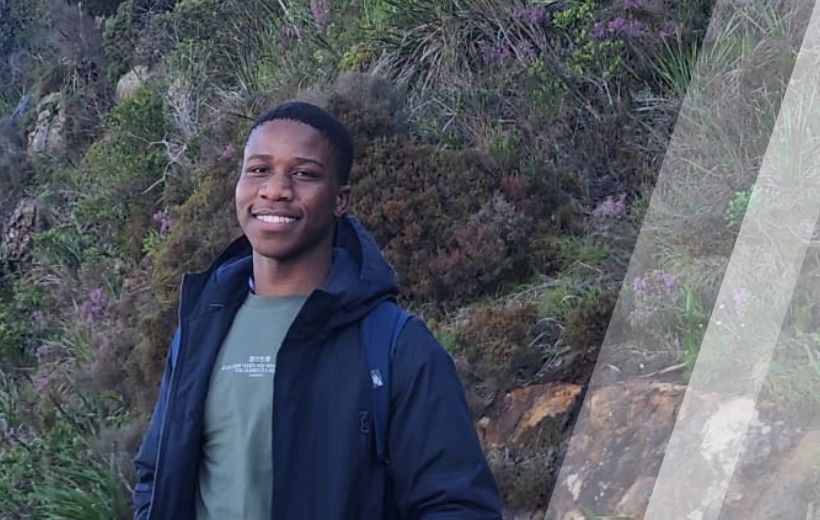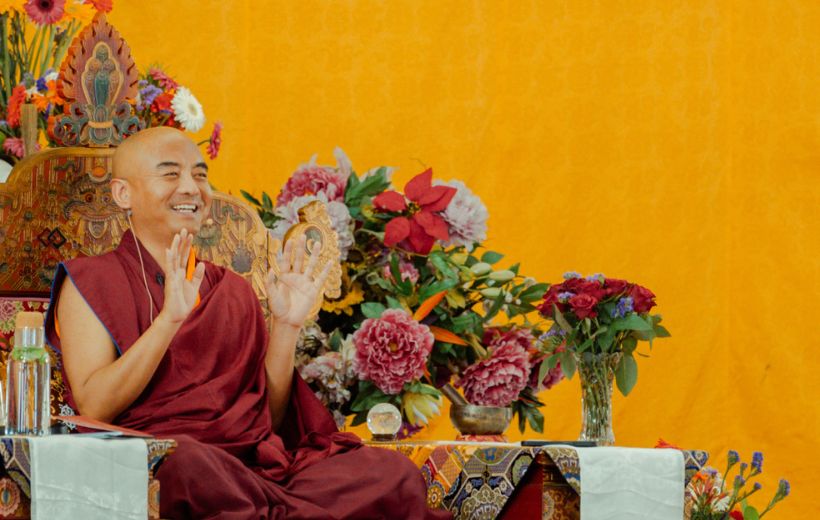Mind Was the Cause of My Panic — and the Cure
By Scott Alexander Jones • 3 min read
By Scott Alexander Jones • 3 min read

I had no choice. Or at least no other options left. Considering my condition, I felt lucky to have reached the age of forty with only five or six full-blown “yeah, I’m definitely dying this time” panic attacks under my belt. After some brushes with blindness and emergency eye surgeries, though, followed by fatherhood and its attendant worries, the panic had returned — with a vengeance. A sweaty, sleepless, weeklong feedback loop of fear. A certainty that my only way out of bed was through a fatal stroke.
Twenty-five years earlier, as a Texan teenager, a suburban punk hungry for counterculture, I’d found Buddhism through the Beat Generation. Somehow, though, in the intervening years, I hadn’t gotten the memo that “The way out is in” — that my mind (not the world outside it) was the cause of all my panic, but also the cure. As an undergrad, I saw the Dalai Lama speak. As a graduate student, I studied and wrote Zen poems. I was even published in the Buddhist Poetry Review. Yet, I still thought hiking paths counted as spiritual paths. When I walked the Camino de Santiago pilgrimage route across Spain, lost in thought for days on end, I labeled my lack of headphones as “meditation.”
This misapprehension would have persisted, too, had it not been for (quite literally, for me) the panic attack to end all panic attacks. After the dust settled, after my doctor urged me to find a way to separate my health issues — and those of my two young daughters — from my health anxiety, I resolved to follow his advice, wherever it might lead me.
“For skeptics, the only viable inroad is science, with its rigorous verifiability. It was eye-opening to discover how much science had already validated the many benefits of meditation.”
— Scott Alexander Jones
I soon found a free Mindfulness-Based Stress Reduction (MBSR) course online called Palouse Mindfulness. It was a lifeline. It helped demystify my anxiety. By simply noticing my fears without fighting them, I felt their iron grip loosening. As luck would have it, this course recommended the book that would forever change my life: Richard Davidson and Daniel Goleman’s Altered Traits: Science Reveals How Meditation Changes Your Mind, Brain, and Body. From there, it was just a hop, skip, and jump to Cortland Dahl’s work with the Healthy Minds app, Tergar Madison’s dharma talks on SoundCloud, and the timeless books of the science-minded meditation prodigy who would become my main teacher.
While it seems obvious now that I would connect so profoundly with Mingyur Rinpoche, not to mention Cortland Dahl, given our shared history of panic attacks, it’s hard to exaggerate how unlikely it was that somebody like me — a stone-cold atheist hardened against religion by a Bible Belt upbringing — would ever find a formal spiritual path, let alone a formal spiritual teacher. For skeptics, the only viable inroad is science, with its rigorous verifiability. It was eye-opening to discover how much science had already validated the many benefits of meditation. And the evidence was only growing. It was happening now. It was thrilling.
The concepts swiftly locked into place. I learned that the endless chattering in my head was called the “default mode network” by neuroscientists (and “monkey mind” by Buddhists). I learned that the same way I had trained my body to run the Prague Marathon, I could likewise train my mind (via “neuroplasticity”) to quiet its chattering. Better still, this quieting has a “dosage effect” whereby the moments of mindfulness sprinkled throughout my day accumulate, furthering my inner transformation towards resilience. Needless to say, I felt deeply empowered by my newfound focus. What was missing was a deeper purpose.
As I had learned through the one-two punch of Buddhism and neuroscience, the stronger one’s purpose in life, the stronger one’s resilience towards its slings and arrows. And the best way to boost one’s happiness and well-being, I also learned, is to focus on the happiness and well-being of others. I was sold. But what was my purpose? And how could I help others?
With my anxiety receding into the rearview, I attended the Discovering the Buddha Within program at Tibet Open House in Prague, led by His Eminence Gyalton Rinpoche, whose lucid turnings of the wheel of dharma inspired me to take refuge. Shortly thereafter, I saw that my purpose, like my practice, had been hiding in plain sight.
Meditation was my first step towards bettering myself and the world around me. To step deeper down this path, I simply needed to help others discover meditation. Fortunately, I was in good company; my main teacher perfectly embodied this passion.
A year into finding the dharma, I’m still searching for ways to help get the world meditating. Good thing I’m not alone in this endeavor. Now more than ever, this chaotic world — and my chaotic mind — needs calming. What better way than through our shared purpose.
February 2025

Scott Alexander Jones is an American proofreader, poet, and parent living in Prague. In late 2024, he created Buddhist Prague, a non-commercial, non-sectarian online resource showcasing free English-language mindfulness events in Prague and beyond. As a writer with a Master of Fine Arts in creative writing, Scott blogs about Mingyur Rinpoche. In the spirit of the engaged Buddhism of the Venerable Zen master Thích Nhất Hạnh, he is currently exploring ways to connect traditional Buddhist beliefs to social action.
.
Learn meditation under the skillful guidance of world-renowned teacher Yongey Mingyur Rinpoche at your own pace.


For first-year university student Tshepo Molekwa, meditation has become more than just a stress reliever — it’s a way to stay grounded, make wiser choices, and bring deeper meaning into student life.

Deadlines, competition, pressure — the concept of “burnout” to describe a sense of nervous exhaustion has been around since the 70’s, but never has the feeling of burnout been as prevalent as it is these days. In a situation that’s demanding too much of us, it’s natural to experience burnout. Still, there are certainly a…

If you find that your emotions are challenging, join us on a transformative meditative journey as Justin Kelley reflects on Mingyur Rinpoche’s November retreat, “Abandoning, Transforming, Recognizing,” and the power of meeting the teachings where they come alive — at Tergar Osel Ling Monastery in Kathmandu.
If you enjoyed reading our articles, please join our mailing list and we’ll send you our news and latest pieces.